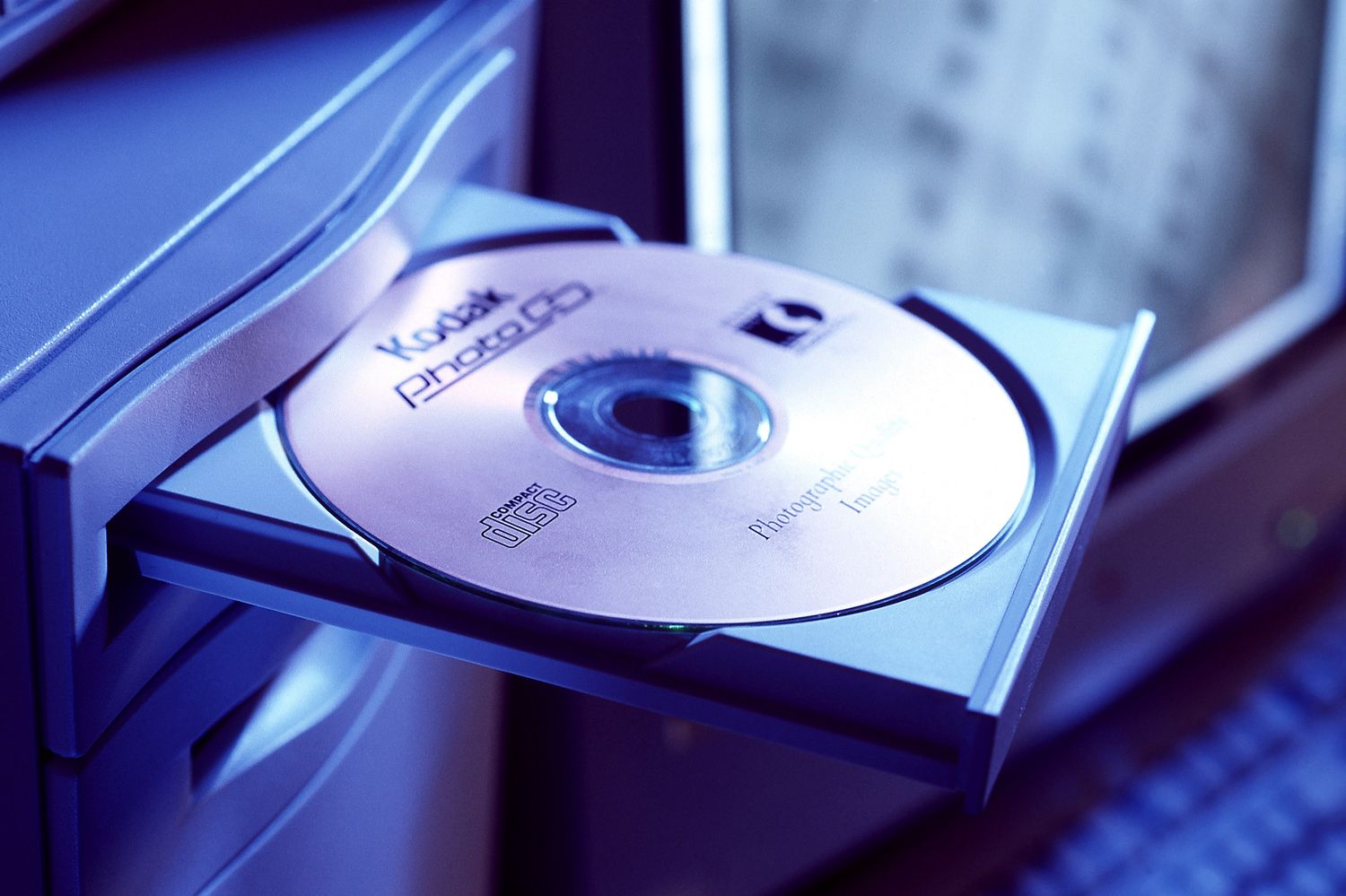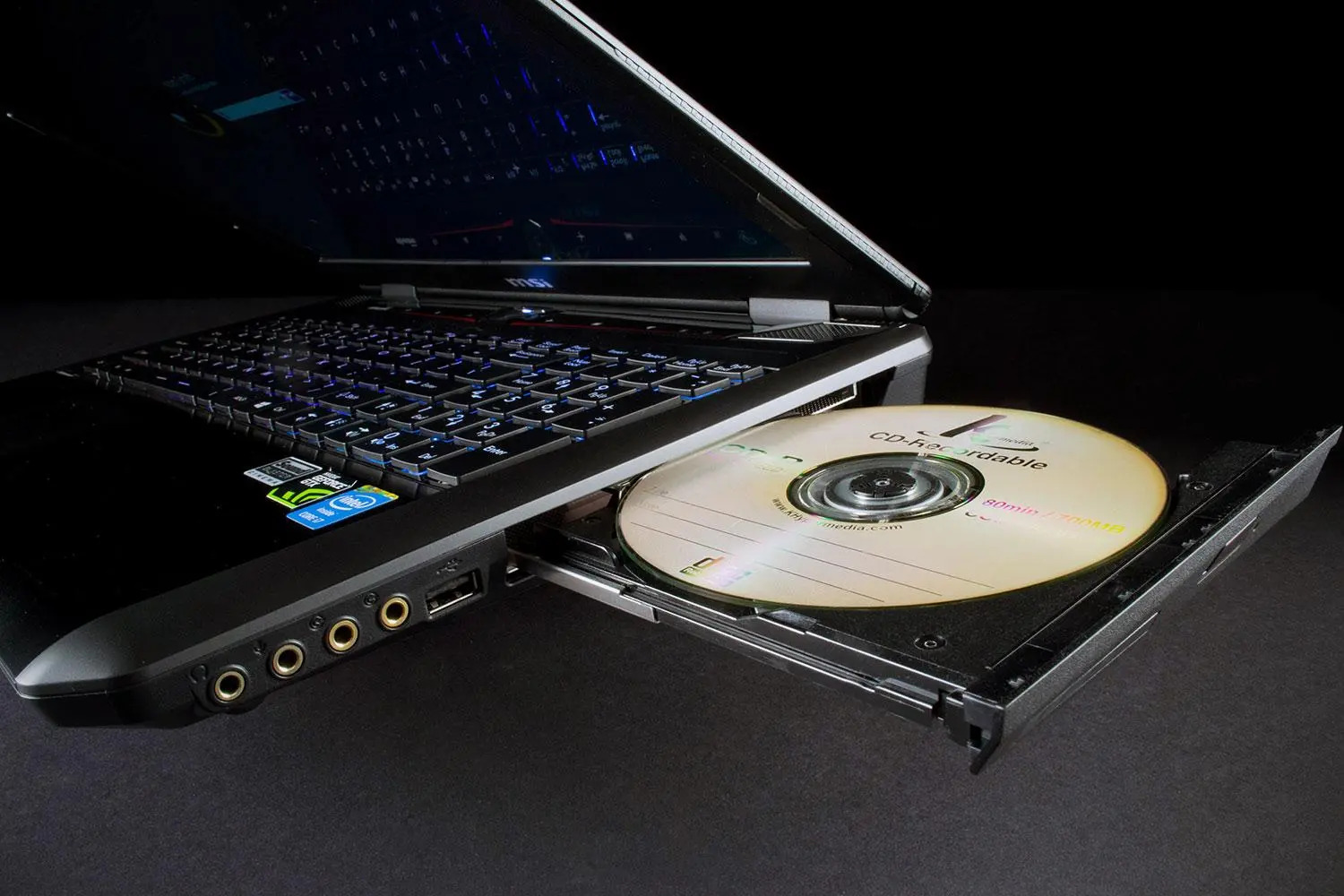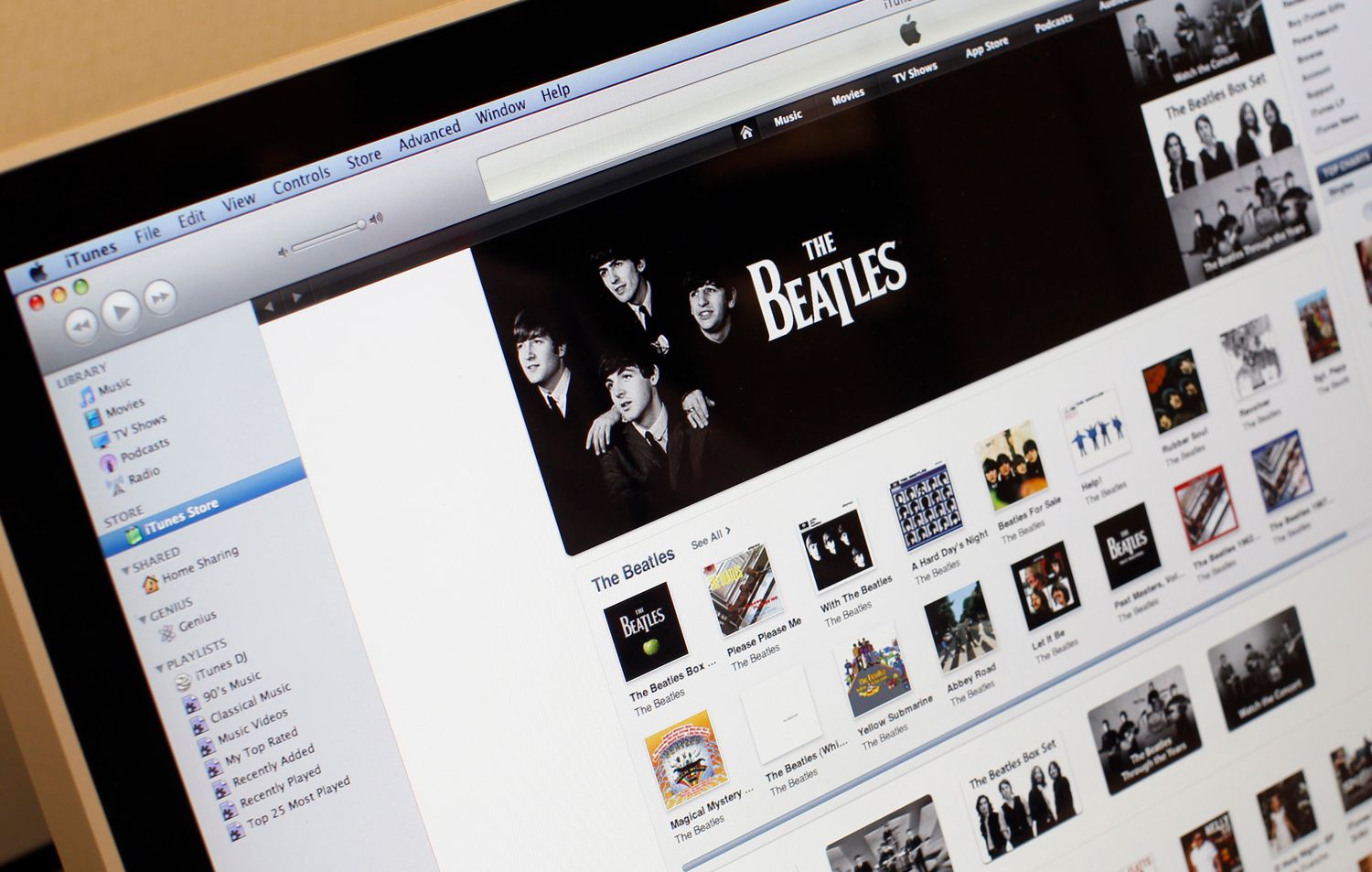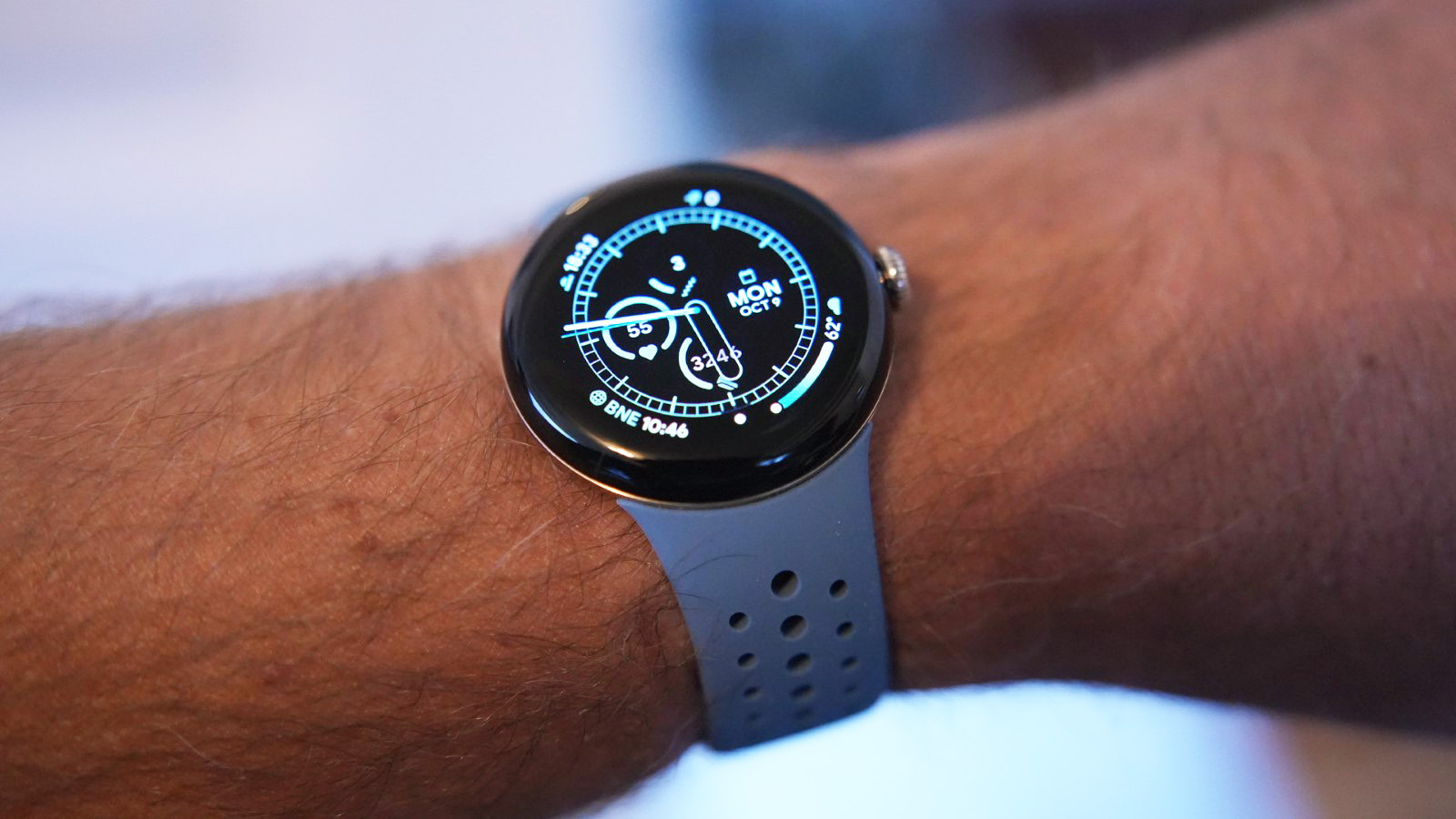Home>Production & Technology>Digital>When You Purchase Digital Music, Are You Allowed To Burn It Onto A CD?


Digital
When You Purchase Digital Music, Are You Allowed To Burn It Onto A CD?
Published: March 10, 2024
When you buy digital music, can you legally burn it to a CD? Understand the rules and rights for digital music purchases. Find out more.
(Many of the links in this article redirect to a specific reviewed product. Your purchase of these products through affiliate links helps to generate commission for AudioLover.com, at no extra cost. Learn more)
Table of Contents
Introduction
In today's digital age, the way we consume music has undergone a profound transformation. With the advent of digital music platforms and online stores, the convenience of accessing and purchasing music has never been greater. However, this convenience has also raised important questions about the rights and limitations associated with digital music purchases. One common query that often arises is whether consumers are permitted to burn digital music onto a CD after purchasing it.
As technology continues to evolve, the lines between physical and digital media have become increasingly blurred. While the traditional method of purchasing physical CDs and burning them onto personal devices has been well-established, the rules governing the burning of digital music onto CDs are not always clear to the average consumer. This lack of clarity can lead to confusion and uncertainty regarding the permissible uses of purchased digital music.
In this article, we will delve into the intricacies of digital music purchases and explore the terms and conditions that govern the burning of digital music onto CDs. By shedding light on the relevant copyright laws and fair use provisions, we aim to provide a comprehensive understanding of the rights and restrictions associated with digital music ownership. Additionally, we will examine the specific limitations imposed by digital music platforms and online stores, offering valuable insights for music enthusiasts and consumers alike.
By gaining a deeper understanding of the legal and practical aspects surrounding the burning of digital music onto CDs, readers will be equipped with the knowledge necessary to navigate this complex terrain with confidence. Let's embark on this exploration to unravel the nuances of digital music ownership and the rights that accompany it.
Understanding Digital Music
In the digital era, music has transitioned from physical formats, such as CDs and vinyl records, to digital files that can be easily downloaded or streamed. Digital music refers to audio files that are stored and transmitted in a digital format, allowing users to access and enjoy their favorite songs through various electronic devices. These digital files can take the form of MP3s, AAC, FLAC, and other formats, each offering its own unique balance of sound quality and file size.
The shift to digital music has revolutionized the way people consume and interact with music. With the rise of online music stores and streaming platforms, music enthusiasts can explore vast libraries of songs and albums, instantly accessing their favorite tracks with just a few clicks. This accessibility has not only transformed the music industry but has also empowered listeners to curate personalized playlists and discover new artists with unprecedented ease.
Moreover, digital music has facilitated the emergence of innovative music distribution models, enabling independent artists to reach global audiences without the need for traditional record label support. This democratization of music distribution has fostered a diverse and vibrant musical landscape, allowing artists from all backgrounds to share their creations with the world.
As digital music continues to evolve, new technologies and formats, such as high-resolution audio and immersive 3D audio experiences, are redefining the boundaries of sonic fidelity and artistic expression. These advancements are reshaping the way listeners engage with music, offering immersive and captivating auditory experiences that transcend traditional stereo sound.
In essence, understanding digital music entails recognizing its transformative impact on the music industry, the unparalleled accessibility it provides to listeners, and the ongoing technological innovations that shape the sonic landscape. By embracing the nuances of digital music, consumers and music enthusiasts can fully appreciate the dynamic and ever-evolving nature of the musical experience in the digital age.
Terms and Conditions of Purchase
When purchasing digital music, it is essential to familiarize oneself with the terms and conditions that govern the use and distribution of the acquired content. These terms and conditions, often outlined in the End User License Agreement (EULA) or Terms of Service, delineate the rights and restrictions imposed by the digital music provider. While the specifics may vary between different platforms and online stores, certain common elements can be found in the terms and conditions of digital music purchases.
One fundamental aspect typically addressed in the terms and conditions is the scope of the license granted to the consumer upon purchasing digital music. Unlike physical media, where ownership of the music is more straightforward, digital music purchases often involve the acquisition of a license to use the content rather than full ownership. This distinction is crucial, as it influences the permissible actions that can be taken with the purchased digital music.
Additionally, the terms and conditions often specify the authorized usage of the digital music, including any limitations on copying, sharing, or modifying the content. These provisions are designed to safeguard the rights of content creators and copyright holders while ensuring that consumers understand the boundaries of their usage rights. Furthermore, the terms may address the compatibility of the purchased digital music with different devices and software, offering guidance on the supported platforms for playback and storage.
Moreover, the terms and conditions of purchase frequently outline the restrictions on transferring or reselling digital music to third parties. This aspect is particularly relevant in the context of digital rights management (DRM), which may impose technological barriers to prevent unauthorized distribution of the purchased content. Understanding these restrictions is crucial for consumers to navigate the legal and ethical considerations associated with sharing or transferring digital music to others.
In essence, the terms and conditions of purchase serve as a contractual framework that governs the relationship between the consumer and the digital music provider. By carefully reviewing and comprehending these terms, consumers can make informed decisions regarding the usage and management of their digital music collection, ensuring compliance with legal requirements and respecting the rights of content creators.
By gaining a comprehensive understanding of the terms and conditions of digital music purchases, consumers can navigate the digital music landscape with clarity and confidence, making the most of their music acquisitions while respecting the rights and obligations outlined by the digital music providers.
Copyright Laws and Fair Use
Copyright laws play a pivotal role in shaping the rights and obligations associated with digital music ownership. These laws are designed to protect the intellectual property of content creators, including musicians, songwriters, and recording companies, by granting them exclusive rights over their creations. In the context of digital music, copyright laws establish the legal framework that governs the reproduction, distribution, and public performance of musical works.
One key concept within copyright law is fair use, which provides a limited exception to the exclusive rights of copyright holders. Fair use allows for the use of copyrighted material for purposes such as criticism, commentary, news reporting, teaching, scholarship, and research, without the need for explicit permission from the copyright owner. However, the application of fair use is subject to specific criteria, including the purpose and character of the use, the nature of the copyrighted work, the amount and substantiality of the portion used, and the potential effect on the market for the original work.
In the context of digital music, the principles of fair use can influence the permissible actions that consumers may take with their purchased music. For instance, creating a personal backup copy of digital music for archival purposes may align with the principles of fair use, as it serves to protect the consumer's access to the music without undermining the market for the original work. However, the reproduction and distribution of digital music beyond the scope of personal use may infringe upon the exclusive rights of copyright holders, necessitating a careful consideration of fair use principles.
It is important for consumers to recognize that fair use is a nuanced and context-specific concept, and its application to digital music ownership requires a thoughtful assessment of the specific circumstances. While fair use can provide flexibility in certain scenarios, it is essential to exercise caution and adhere to the legal boundaries delineated by copyright laws and fair use principles. By doing so, consumers can navigate the complexities of digital music ownership while respecting the rights of content creators and upholding the principles of fair use within the confines of the law.
In summary, copyright laws and fair use principles form the legal framework that governs the rights and limitations associated with digital music ownership. By understanding the interplay between copyright laws, fair use, and digital music consumption, consumers can make informed decisions regarding the usage and reproduction of their digital music collection, ensuring compliance with legal requirements and respecting the rights of copyright holders.
Restrictions on Burning Digital Music
When it comes to burning digital music onto a CD, consumers often encounter specific restrictions imposed by digital music platforms and online stores. These restrictions are rooted in the terms and conditions of purchase, as well as the underlying copyright laws that govern the usage and distribution of digital music.
One common restriction pertains to the duplication and redistribution of digital music. Many digital music platforms explicitly prohibit the burning of purchased music onto CDs for the purpose of creating multiple copies for distribution or resale. This restriction aligns with the principles of copyright law, which grant exclusive reproduction rights to the copyright holders. By limiting the duplication of digital music onto physical media, these platforms aim to safeguard the economic interests of content creators and rights holders.
Furthermore, some digital music providers impose technical limitations on the burning of digital music onto CDs through the implementation of digital rights management (DRM) technologies. DRM systems are designed to control the usage of digital content and may restrict the burning of music onto CDs or impose limitations on the number of times a particular track can be burned. While DRM has been a subject of debate due to its impact on consumer rights, its use by digital music providers underscores the efforts to enforce the terms and conditions of purchase and uphold the rights of copyright holders.
In addition to restrictions on duplication and DRM-related limitations, consumers may also encounter constraints related to the format and quality of burned CDs. Some digital music platforms specify the permitted formats for burning digital music, ensuring compatibility with standard CD players and other playback devices. Moreover, limitations on the burning of high-definition or lossless audio formats onto CDs may be imposed to maintain control over the distribution and quality of the purchased music.
It is important for consumers to be aware of these restrictions when considering the burning of digital music onto CDs. By understanding and respecting the terms and conditions set forth by digital music providers, consumers can navigate the boundaries of permissible usage while honoring the rights of content creators and copyright holders.
In essence, the restrictions on burning digital music onto CDs serve as a reflection of the legal and technological measures employed to uphold the integrity of digital music distribution and protect the interests of rights holders. By adhering to these restrictions, consumers contribute to the preservation of a balanced and sustainable digital music ecosystem, where creativity and innovation are duly recognized and rewarded.
Conclusion
In conclusion, the landscape of digital music ownership is characterized by a dynamic interplay of legal, technological, and consumer-oriented considerations. As consumers navigate the realm of digital music purchases and usage, it becomes evident that the burning of digital music onto CDs is subject to a myriad of rights and restrictions, shaped by copyright laws, fair use principles, and the terms and conditions set forth by digital music providers.
The evolution of digital music has redefined the ways in which individuals engage with and enjoy their favorite songs. The convenience of accessing vast music libraries, the flexibility of creating personalized playlists, and the immersive experiences facilitated by high-resolution audio formats have enriched the musical journey for listeners worldwide. However, amidst this digital renaissance, it is essential for consumers to grasp the nuances of digital music ownership and the associated rights and limitations.
The terms and conditions of digital music purchases serve as a contractual framework that delineates the permissible uses of the acquired content, emphasizing the distinction between ownership and licensing. By understanding and adhering to these terms, consumers can make informed decisions regarding the management and utilization of their digital music collection, ensuring compliance with legal requirements and respecting the rights of content creators.
Furthermore, the principles of fair use provide a nuanced framework for evaluating the permissible actions that consumers may undertake with their purchased digital music. While fair use can offer flexibility in certain scenarios, it is crucial for consumers to exercise discernment and align their usage with the legal boundaries and ethical considerations outlined by copyright laws and fair use principles.
The restrictions on burning digital music onto CDs, imposed by digital music platforms and online stores, underscore the efforts to uphold the integrity of digital music distribution and protect the economic interests of content creators and rights holders. By recognizing and respecting these restrictions, consumers contribute to the sustainability of the digital music ecosystem, fostering a balanced environment where creativity and innovation are duly recognized and rewarded.
In essence, the journey of digital music ownership is characterized by a delicate balance between consumer empowerment, technological advancements, and legal frameworks. By embracing a comprehensive understanding of the rights and restrictions associated with digital music, consumers can navigate this landscape with clarity and confidence, ensuring a harmonious coexistence between their passion for music and the rights of content creators.











